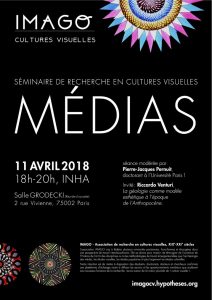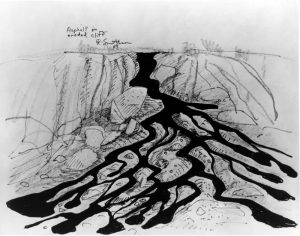 L’association IMAGO a le plaisir de vous inviter à la quatrième séance de son séminaire de recherche qui présentera cette fois la notion de « MÉDIAS ». Elle illustrera les développements principaux de la théorie et de l’archéologie des médias en tant qu’approches méthodologiques pour la recherche en histoire de l’art.
L’association IMAGO a le plaisir de vous inviter à la quatrième séance de son séminaire de recherche qui présentera cette fois la notion de « MÉDIAS ». Elle illustrera les développements principaux de la théorie et de l’archéologie des médias en tant qu’approches méthodologiques pour la recherche en histoire de l’art.
Pierre-Jacques Pernuit, doctorant à l’Université Paris 1 introduira la séance avec une analyse de la notion de « MÉDIAS».
Les organisateur-e-s recevront à cette occasion Riccardo Venturi, pour une réflexion autour de « La géologie comme modèle esthétique à l’époque de l’Anthropocène ».
Riccardo Venturi est historien de l’art et critique. Il a notamment collaboré . . . → En lire plus


